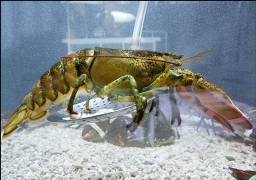
NPS photo
Kathleen Stachowski Other Nations
Last autumn, on a remote forest road in Montana’s northern Bitterroot Mountains, I saw my first fisher. The luxuriously-coated, dark brown carnivore–a member of the weasel family–had just caught lunch. As he dragged his prey into the forest, I wished him safe passage through the coming trapping season. A few years earlier I came face-to-face with a pine marten on a high, wild trail in the Tetons. My first and only marten sighting was cause for gratitude—just the two of us in a deep forest, quietly considering each other. An exquisite least weasel in Yellowstone’s backcountry, a long-tailed weasel rippling through snow on my own property–no doubt about it, the mustelids had, well, weaseled their way into my heart. But for all my considerable time spent in wild, remote places, I’ve yet to encounter a wolverine. What an unforgettable event that will be!
But, just like excrement, trapping happens. Some Montana mustelids (otter, fisher, wolverine) are considered “furbearers” for whom quotas exist; others like the pine marten face unlimited trapping. Continue reading →
Filed under: Uncategorized | 2 Comments »






 First, the corndogs. The headline advises me to “Celebrate corndogs, hoops on national day.” Turns out that
First, the corndogs. The headline advises me to “Celebrate corndogs, hoops on national day.” Turns out that 
 At first glance, the Chinese Lunar New Year and Easter have little in common. On second glance, a long-eared furry creature hops through both. Is it possible to celebrate a new year and wax sentimental about a candy-bearing bunny while ignoring the
At first glance, the Chinese Lunar New Year and Easter have little in common. On second glance, a long-eared furry creature hops through both. Is it possible to celebrate a new year and wax sentimental about a candy-bearing bunny while ignoring the 

